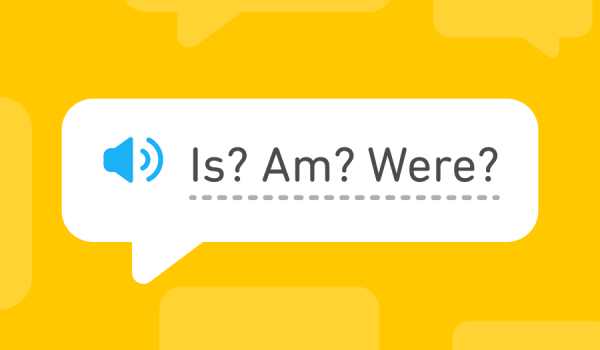10 ┘üž╣┘ä ┘Šž▒┌®ž¦ž▒ž©ž▒ž» ž▓ž©ž¦┘å ž¦┘å┌»┘ä█īž│█ī ž©ž¦ ┘ģž½ž¦┘ä ┘ł ┘å┌®ž¦ž¬ ┌»ž▒ž¦┘ģž▒█ī

1. Be (ž©┘łž»┘å)
- Example: She is my friend.
- Explanation: ┘üž╣┘ä “be” █ī┌®█ī ž¦ž▓ ┘Šž¦█ī┘ćŌĆīž¦█īŌĆīž¬ž▒█ī┘å ž¦┘üž╣ž¦┘ä ž»ž▒ ž▓ž©ž¦┘å ž¦┘å┌»┘ä█īž│█ī ž¦ž│ž¬ ┘ł ž©┘ć ┘ģž╣┘å█ī “ž©┘łž»┘å” █īž¦ “┘ćž│ž¬┘å” ž¦ž│ž¬┘üž¦ž»┘ć ┘ģ█īŌĆīž┤┘łž». ž┤┌®┘äŌĆī┘枦█ī ┘ģž«ž¬┘ä┘ü žó┘å ž┤ž¦┘ģ┘ä “am”, “is”, “are”, “was”, “were” ┘ćž│ž¬┘åž». ž¦█ī┘å ┘üž╣┘ä ž»ž▒ ž¼┘ģ┘䞦ž¬ ž│ž¦ž»┘ćžī ž│┘łž¦┘ä█ī ┘ł ┘ģ┘å┘ü█ī ž¦ž│ž¬┘üž¦ž»┘ć ┘ģ█īŌĆīž┤┘łž».
- Examples:
- Positive: They are happy.
- Negative: He is not here.
- Question: Are you coming tomorrow?
2. Have (ž»ž¦ž┤ž¬┘å)
- Example: I have a car.
- Explanation: ž¦█ī┘å ┘üž╣┘ä ž©┘ć ┘ģž╣┘å█ī “ž»ž¦ž┤ž¬┘å” ž¦ž│ž¬ ┘ł ž»ž▒ ž▓┘ģž¦┘åŌĆī┘枦█ī ┘ģž«ž¬┘ä┘ü ž¦ž▓ ž¼┘ģ┘ä┘ć ž▓┘ģž¦┘å žŁž¦┘ä ž│ž¦ž»┘ć (I have) ┘ł ž▓┘ģž¦┘å ┌»ž░ž┤ž¬┘ć (I had) ž©┘ć ┌®ž¦ž▒ ┘ģ█īŌĆīž▒┘łž».
- Examples:
- Positive: She has two brothers.
- Negative: They don’t have any pets.
- Question: Do you have a pen?
3. Go (ž▒┘üž¬┘å)
- Example: We go to the park every weekend.
- Explanation: ┘üž╣┘ä “go” ž©ž▒ž¦█ī ž©█īž¦┘å žŁž▒┌®ž¬ █īž¦ ž▒┘üž¬┘å ž¦ž▓ ž¼ž¦█ī█ī ž©┘ć ž¼ž¦█ī ž»█ī┌»ž▒ ž¦ž│ž¬┘üž¦ž»┘ć ┘ģ█īŌĆīž┤┘łž». ž»ž▒ ž▓┘ģž¦┘åŌĆī┘枦█ī ┘ģž«ž¬┘ä┘üžī ž┤┌®┘äŌĆī┘枦█ī “go”, “went” ┘ł “gone” ž©┘ć ┌®ž¦ž▒ ┘ģ█īŌĆīž▒┘ł┘åž».
- Examples:
- Positive: They go to school by bus.
- Negative: She doesn’t go to the gym.
- Question: Did you go to the concert last night?
4. Do (ž¦┘åž¼ž¦┘ģ ž»ž¦ž»┘å)
- Example: I do my homework every day.
- Explanation: ┘üž╣┘ä “do” ž©ž▒ž¦█ī ž¦┘åž¼ž¦┘ģ ┌®ž¦ž▒┘枦 ┘ł ┘łžĖž¦█ī┘ü ž▒┘łž▓┘ģž▒┘ć ž©┘ć ┌®ž¦ž▒ ┘ģ█īŌĆīž▒┘łž» ┘ł ž»ž▒ ž¼┘ģ┘䞦ž¬ ž│┘łž¦┘ä█ī ┘ł ┘ģ┘å┘ü█ī ┘å█īž▓ ┌®ž¦ž▒ž©ž▒ž» ž»ž¦ž▒ž». ž»ž▒ ž▓┘ģž¦┘åŌĆī┘枦█ī ┘ģž«ž¬┘ä┘ü ž¦ž▓ “do”, “does”, “did” ž¦ž│ž¬┘üž¦ž»┘ć ┘ģ█īŌĆīž┤┘łž».
- Examples:
- Positive: He does his work on time.
- Negative: I don’t do that.
- Question: Do you do your chores?
5. Make (ž│ž¦ž«ž¬┘å)
- Example: She makes delicious cakes.
- Explanation: ž¦█ī┘å ┘üž╣┘ä ž©┘ć ┘ģž╣┘å█ī “ž│ž¦ž«ž¬┘å” █īž¦ “žó┘ģž¦ž»┘ć ┌®ž▒ž»┘å” ž¦ž│ž¬. ž©ž▒ž¦█ī ž¦ž┤ž¦ž▒┘ć ž©┘ć ž│ž¦ž«ž¬ █īž¦ ž¬┘ł┘ä█īž» ┌å█īž▓█ī ž¦ž│ž¬┘üž¦ž»┘ć ┘ģ█īŌĆīž┤┘łž».
- Examples:
- Positive: He makes a good presentation.
- Negative: I don’t make mistakes often.
- Question: Did she make the dinner?
6. Want (ž«┘łž¦ž│ž¬┘å)
- Example: I want a cup of coffee.
- Explanation: “Want” ž©┘ć ┘ģž╣┘å█ī “ž«┘łž¦ž│ž¬┘å” ž¦ž│ž¬ ┘ł ž©ž▒ž¦█ī ž©█īž¦┘å ž«┘łž¦ž│ž¬┘ćŌĆī┘枦 ┘ł žóž▒ž▓┘ł┘枦 ž¦ž│ž¬┘üž¦ž»┘ć ┘ģ█īŌĆīž┤┘łž».
- Examples:
- Positive: She wants to travel abroad.
- Negative: We don’t want to leave yet.
- Question: Do you want some ice cream?
7. Take (ž©ž▒ž»ž¦ž┤ž¬┘å)
- Example: Please take an umbrella.
- Explanation: “Take” ž©┘ć ┘ģž╣┘å█ī “ž©ž▒ž»ž¦ž┤ž¬┘å” █īž¦ “┌»ž▒┘üž¬┘å” ž¦ž│ž¬ ┘ł ž©ž▒ž¦█ī ž¦ž┤ž¦ž▒┘ć ž©┘ć ž╣┘ģ┘ä ┌»ž▒┘üž¬┘å █īž¦ žŁ┘ģ┘ä ┌å█īž▓█ī ž©┘ć ┌®ž¦ž▒ ┘ģ█īŌĆīž▒┘łž».
- Examples:
- Positive: He takes the bus to work.
- Negative: I don’t take sugar in my tea.
- Question: Did you take the keys?
8. Give (ž»ž¦ž»┘å)
- Example: I give him a gift every year.
- Explanation: ž¦█ī┘å ┘üž╣┘ä ž©┘ć ┘ģž╣┘å█ī “ž»ž¦ž»┘å” ž¦ž│ž¬ ┘ł ž©ž▒ž¦█ī ┘åž┤ž¦┘å ž»ž¦ž»┘å ž╣┘ģ┘ä ž¦┘垬┘鞦┘ä ┌å█īž▓█ī ž©┘ć ┌®ž│█ī ž¦ž│ž¬┘üž¦ž»┘ć ┘ģ█īŌĆīž┤┘łž».
- Examples:
- Positive: She gives good advice.
- Negative: I don’t give up easily.
- Question: Did you give her the book?
9. See (ž»█īž»┘å)
- Example: I see a bird outside the window.
- Explanation: “See” ž©┘ć ┘ģž╣┘å█ī “ž»█īž»┘å” ž¦ž│ž¬ ┘ł ž©ž▒ž¦█ī ž¦ž┤ž¦ž▒┘ć ž©┘ć ž»█īž»┘å ┌å█īž▓█ī ž©ž¦ ┌åž┤┘ģ ž¦ž│ž¬┘üž¦ž»┘ć ┘ģ█īŌĆīž┤┘łž».
- Examples:
- Positive: We see each other every day.
- Negative: He doesn’t see the point.
- Question: Did you see that movie?
10. Know (ž»ž¦┘åž│ž¬┘å)
- Example: I know the answer.
- Explanation: “Know” ž©┘ć ┘ģž╣┘å█ī “ž»ž¦┘åž│ž¬┘å” ž¦ž│ž¬ ┘ł ž©ž▒ž¦█ī ž©█īž¦┘å ž¦žĘ┘䞦ž╣ž¦ž¬ █īž¦ žó┌»ž¦┘ć█ī ž¦ž▓ ┌å█īž▓█ī ž¦ž│ž¬┘üž¦ž»┘ć ┘ģ█īŌĆīž┤┘łž».
- Examples:
- Positive: They know the truth.
- Negative: I don’t know her.
- Question: Do you know where he is?
┘å┌®ž¦ž¬ ┌»ž▒ž¦┘ģž▒█ī ┘ģ┘ć┘ģ:
- ž▓┘ģž¦┘åŌĆī┘枦: ž¦┌®ž½ž▒ ž¦█ī┘å ž¦┘üž╣ž¦┘ä ž»ž▒ ž▓┘ģž¦┘åŌĆī┘枦█ī ┘ģž«ž¬┘ä┘ü (žŁž¦┘ä ž│ž¦ž»┘ćžī ┌»ž░ž┤ž¬┘ć ž│ž¦ž»┘ćžī žó█ī┘åž»┘ć ┘ł …) ž¦ž│ž¬┘üž¦ž»┘ć ┘ģ█īŌĆīž┤┘ł┘åž». ž©┘ć žĘ┘łž▒ ┘ģž½ž¦┘äžī ┘üž╣┘ä “go” ž»ž▒ ┌»ž░ž┤ž¬┘ć ž©┘ć “went” ž¬ž©ž»█ī┘ä ┘ģ█īŌĆīž┤┘łž».
- ž┤┌®┘äŌĆī┘枦█ī ┘ģ┘å┘ü█ī ┘ł ž│┘łž¦┘ä█ī: ž©ž▒ž¦█ī ž│ž¦ž«ž¬ ž¼┘ģ┘䞦ž¬ ┘ģ┘å┘ü█ī ž¦ž▓ “not” ┘ł ž©ž▒ž¦█ī ž¼┘ģ┘䞦ž¬ ž│┘łž¦┘ä█ī ž¦ž▓ “do”, “does” █īž¦ “did” ž¦ž│ž¬┘üž¦ž»┘ć ┘ģ█īŌĆīž┤┘łž».
- ž¬ž▒ž¬█īž© ┘łž¦┌ś┘ćŌĆī┘枦 ž»ž▒ ž¼┘ģ┘ä┘ć: ž»ž▒ ž¼┘ģ┘䞦ž¬ ┘ģž½ž©ž¬ ┘ģž╣┘ģ┘ł┘䞦┘ŗ ┘üž¦ž╣┘ä ┘éž©┘ä ž¦ž▓ ┘üž╣┘ä ┘ģ█īŌĆīžó█īž»žī ž»ž▒ ž¼┘ģ┘䞦ž¬ ┘ģ┘å┘ü█ī ┘ł ž│┘łž¦┘ä█ī ┘üž╣┘ä ┌®┘ģ┌®█ī ž©┘ć ┌®ž¦ž▒ ┘ģ█īŌĆīž▒┘łž».
